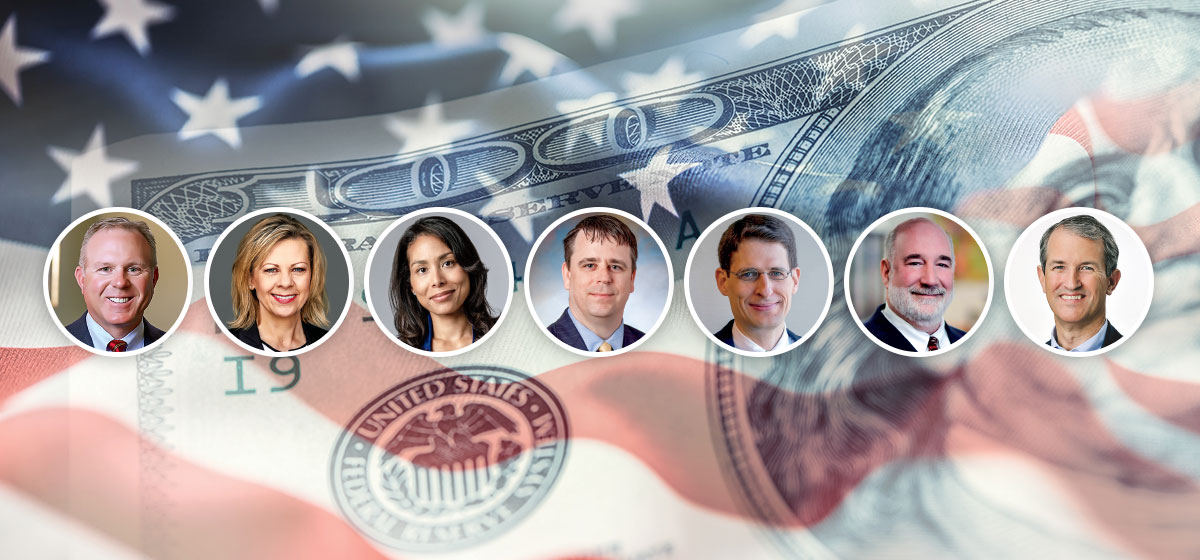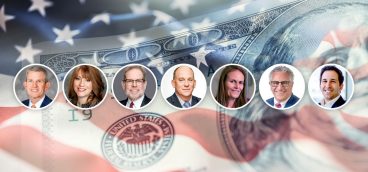
Pittsburgh Quarterly asked the region’s top experts to respond to these questions: As the U.S. economy gradually recovers from the pandemic, which sectors of the market do you like now? How are you positioning client portfolios? We thank them for giving readers their responses, which follow.
Win Smathers, Shorebridge Wealth Management
We manage diversified portfolios using mutual funds and ETFs at the core, which provide broad exposure to most all sectors, and for larger accounts, we’ll additionally own individual stocks of our best ideas. Our process leads us to own great companies that are beneficiaries of long-term secular trends. As such, we won’t be doing much repositioning this year but, rather, we’ll maintain positions in what we’ve liked all along. We’ll own these great companies in good times and in bad, due to their attractive growth attributes. We want to own the companies making life better and us more productive. Our ideas tend to be concentrated in information technology, financial technology, biotechnology and health care, but we’ll own innovators in other sectors if the favorable trends are evident. Specifically, in the post-pandemic recovery, we expect a rising tide will lift most all ships as stocks should benefit from the Goldilocks environment of stimulus, low rates and pent-up demand for goods and services. Since the election in November, we’ve seen a minor rotation from the names that were popular during the lockdown to some of the cheaper, value ideas. We would expect the sectors of the economy most negatively impacted during the pandemic (e.g. travel-related, entertainment) to be the biggest relative beneficiaries of the “return to normal” trade. Slowly rising long-term interest rates with a steepening yield curve will benefit financials like banks and insurance companies. And most commodity producers and industrials should get a boost from infrastructure spending and a faster growing economy.
Jay F. Mastilak, The Mastilak Wealth Management Group at Stifel
We subscribe to a strategic multifaceted diversified approach to align our clients’ risk tolerance and financial goals. We review and adjust to the current market environment.
Where appropriate for the client, we are emphasizing investments in equities, both domestic and international. On the fixed income side, we are focusing on short-term maturities and floating rate instruments during this low interest rate environment. For certain investors, we like the disruptive technologies in artificial intelligence, genomics, electric vehicles and 3D printing. A special focus for us is in socially responsible investing, paying attention to potential opportunities with companies that are addressing climate change. Asset allocation (diversification) does not ensure a profit or help protect against loss. Due to their narrow focus, sector-based investments typically exhibit greater volatility.
Myah Moore Irick, The Irick Group, Merrill Private Wealth Management
Economic reopening has picked up, coronavirus cases continue to decline and vaccines have added to confidence with overall global growth continuing to gain momentum. This is a positive time for investors to revisit their asset allocation and also ensure that their overall wealth plan is in line with their values and their intent for their legacy. We are positioning client’s portfolios accordingly, adding to cyclical positioning on equity market weakness, including small-caps, more economically sensitive sectors, credit in fixed income and specific thematic growth segments that are emerging as innovation and infrastructure beneficiaries of the future (i.e., big data, automation, impact). One significant area of focus for our team is impact investing. Impact investing is investing for the potential to make a financial return as well as generate a measurable, beneficial social or environmental impact. More investors are driven to align their wealth with their values. Specifically, we see this playing out in four key areas: to contribute to climate and environmental sustainability (Planet); to support human dignity through inclusion, health and developing communities that are life-giving (People); to drive employment, economic vitality and sustainable communities (Prosperity); and a commitment to ethics and societal benefits (Principles of Governance). Impact investing is an area that we are incredibly excited to see grow — in particular, the areas of gender lens investing and investing in diversity & inclusion funds. In fact, my team’s portfolios are built to generate both social and market alpha.
Scott Love, WesBanco Trust and Investment Services
In our view, the U.S. economy will not have a gradual recovery, but rather one of the fastest growth rates in the past 30 years. The fiscal stimulus provided over the past year has been the largest on record, equaling nearly 20 percent of overall GDP. A significant portion has been placed in savings accounts, which will be spent over the course of the year. The proposed infrastructure bill and low interest rates will only support economic growth in 2021.
However, to pay for this stimulus, Congress and President Biden appear poised to increase a number of different tax rates, which may act as a drag on growth in 2022. As long-term investors, we are focused on this impact on markets and sectors. As a result, we are focused on high quality companies with a defensible market share and solid management teams, and that trade at reasonable valuations. Sectors that we find attractive given our longer-term view include health care, industrials and consumer discretionary. The companies in each of these sectors have diverse drivers of growth and should post compelling performance given our outlook. The investment horizon for many of our clients is measured in years, if not decades, which aligns with our mission to provide compelling returns over a market cycle. A long-term perspective provides us with a critical competitive advantage. Many peers and even global markets are increasingly becoming short-term orientated, which can be fertile ground for active management. We leverage patience to generate attractive long-term risk-adjusted returns.
Henry Beukema, Guyasuta Investment Advisors
For the past several months, we have been tilting more towards value stocks, including small and large cap companies that can benefit from an economic recovery. We believe that banks, industrials and materials are attractive. It is not that investors should sell all of their technology/growth/pandemic stocks but that FAANG plus Microsoft may not be the only market leaders over the next few years. Current valuations of the S&P 500 are high at 23x 2021 earnings expectations and 20x 2022 as compared to the historical average of 16x. Bond investors should continue to be mindful of inflation and overall credit quality, as company balance sheets carry higher levels of debt.
Jack D. Kraus, Allegheny Financial
We follow what some might consider a boring approach of staying at a target allocation, being diversified and utilizing professional money managers in each of the areas of a diversified portfolio. We do not profess to have a crystal ball, and our approach is sound for long-term investors.
Non-traditional factors caused the current economic environment and recession. Consumers and businesses were tasked with being sent home and living a different lifestyle for a year. Initially, companies that benefited from a stay-at-home economy were the strong performers. Once the vaccines were announced and then approved, we saw a large rotation in the market to companies benefiting from the economy opening back up or returning to normal. The market is acting more traditionally during the recovery phase. Smaller companies usually outperform larger companies during the recovery phase. Also, cyclical companies (aka, value stocks) tend to out-perform steadier growth companies during the recovery phase. This may continue for some amount of time. Our suggestion is to retain broad diversification and spend more time enjoying getting back to normal than worrying about your portfolio.
Peter Mathieson, Fairview Capital
We seek to invest in growth-oriented companies that trade at reasonable valuations. The recent increase in intermediate and longer-term interest rates has seen the market start to shift away from the pandemic “winners” of the past 12 months back toward companies well positioned for the eventual recovery of a more “normalized” U.S. economy.
We are focused on companies and sectors that have historically done well during periods of economic expansion. These include financial service and energy stocks, along with business service. We expect to see continued heavy spending in both the health care and technology sectors; on the technology front we favor software and communication infrastructure companies relative to hardware given the steady cash flows and customer renewal rates seen in the those industries.
As to client portfolio positioning, we continue to favor equities over fixed income. We are keeping our equity exposure at the higher end of the ranges agreed upon in client investment policy statements. We believe fixed income investing at these very low interest rates represent a uniquely bad reward potential relative to the capital risk involved; the 30-year Treasury bond has declined over 20 percent in value over the past six months.
We understand investing in equities also entails taking capital risk, and for clients for whom we manage everything, we have encouraged them to set aside 12–24 months of cash necessary to meet personal expenses and mitigate the risk of needing to access cash at the wrong time of the stock market cycle. We expect lower returns from equities over the next decade than what we’ve seen over the past 10 years, but we still expect stocks to meaningfully outperform the returns available in high quality fixed income.












